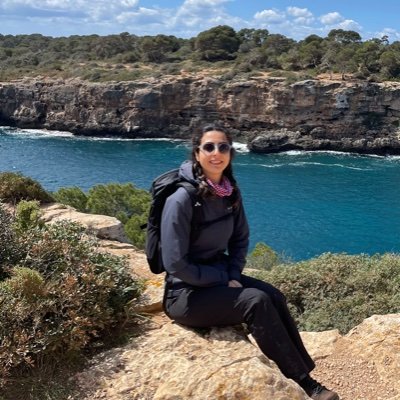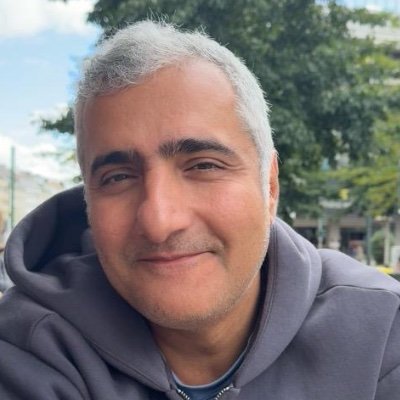
Hana Aliee
@hana_aliee
Followers
490
Following
594
Media
23
Statuses
101
Group leader @CRUK_CI, @Cambridge_Uni Computer scientist interested in AI, math and biology https://t.co/rYDo8asZky
Cambridge, UK
Joined August 2019
I'm honoured to join @CRUK_CI and @Cambridge_Uni as a Junior Group Leader of AI for Cancer. My group will focus on reasoning, multimodality, hypothesis-making, and more to decode disease and health. A few positions are opened — consider applying to outsmart cancer together!
We are delighted to welcome @hana_aliee to the Institute. She joins as a Junior Group Leader and will lead her team in developing AI models to understand the molecular mechanisms driving health and disease. Find out more: https://t.co/FpuvYXMQr9
4
11
43
✨ I’m looking for PhD students in machine learning who are passionate about applying AI to biomedicine to join my lab at the University of Cambridge.✨ More info: https://t.co/xbBn5Fv61U
5
82
291
1/5 Our new correspondence in @TheLancet is a warning. The reimposition of UN sanctions on Iran threatens a public health crisis, and the international community is unprepared. We argue for a new approach. https://t.co/0d6PukQAVV
#Iran #Sanctions #GlobalHealth
6
46
133
High point at #GenomicsAtScale25 with a very cool talk by @hana_aliee. She's hiring so make sure you apply!!
0
2
3
I'm recruiting ML postdocs to join my lab at the University of Cambridge. Our research focuses on generative modelling, counterfactual reasoning, and sequence modelling to reason about and intervene in complex cellular functions. https://t.co/4REPVDTadT
0
1
13
3/ If you'd like to work on the vibrant, collaborative and world-class Cambridge Biomedical Campus @CamBioCampus, apply here: https://t.co/Wy30ageYgs Read more about our research topics here:
0
1
1
2/ I'm beyond grateful to my family, friends, and mentors who have supported me enormously on this path — including @roserventotormo, @Muzz_Haniffa, @teichlab, and many more. I leave @sangerinstitute with unforgettable memories and look forward to future collaborations.
1
0
1
Great joint work with @Alejandro__TL @PaulBer12700698 @stefanAbauer @Yoshua_Bengio @fabian_theis. Link to the paper:
nature.com
Nature Genetics - This Perspective explores causal machine learning in single-cell genomics, addressing challenges such as generalization, interpretability and cell dynamics, while highlighting...
0
7
14
How can causal machine learning help answer causal questions in single-cell genomics—like how genes interact and influence phenotypes? Our latest @NatureGenet paper explores this challenge, along with approaches to generalizability, interpretability, and modeling cell dynamics.
1
11
19
Nearly three-quarters of biomedical researchers think there is a reproducibility crisis in science https://t.co/48JmHRMNls
nature.com
Nature - Survey of more than 1,600 biomedical researchers also flagged small sample sizes and cherry-picking of data as leading causes of reproducibility problems.
40
180
593
Last but not least, a shout out to @KaplFer for his amazing contribution to the package and its maintenance 🙌🏼
0
0
0
14/ Thanks for making it this far! 🚀 If you're curious about new applications or have ideas for extensions, we'd love to hear from you—drop us an email!
1
0
2
13/ Collectively, inVAE allows for the identification of new cell states, more precise pathway enrichment analysis, and enhanced differential expression gene analysis through improved sample stratification.
1
0
3
12/ Finally, inVAE identified spatial cell states in human lung, and highlighted genes and signalling pathways that reflect regional variations of AT1 and ciliated cells. Identified genes were linked to fibrosis, recapitulating the known spatial distribution of this disease.
1
0
2
11/ In the third task, inVAE successfully derived both developmental trajectories and temporal cell states in epithelial cells, and suggested an earlier cell fate split in the neuroendocrine developmental trajectories.
1
0
2
10/ We then expanded this atlas to include samples from three distinct studies, demonstrating the model’s ability to generalise to unseen data, including samples from previously unobserved disease conditions, with significant improvements in cell and disease annotations.
1
0
2
9/ Results: We first generated a human heart atlas encompassing both healthy and diseased samples, showing that inVAE could stratify donors based on the genetic impact of pathogenic variants with higher resolution than SOTA.
1
0
2
8/ inVAE has broad applications for cell state identification, spanning disease variants, developmental stages, and anatomical regions.
1
0
2
7/ inVAE has built-in predictors that transfer labels to new datasets and, crucially, identifies novel cell states when the cells in a new dataset undergo domain shifts, such as those caused by previously unseen diseases.
1
0
2
6/ inVAE incorporates prior knowledge to learn prior distributions of cells specific to each biological condition, like disease. This enables discovering high-resolution cell states and building reference atlases that capture shared & unique molecular signatures across donors.
1
0
4







